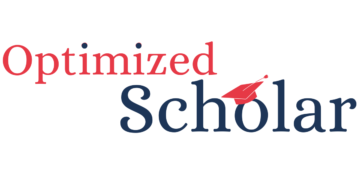Traditional vs. Digital: The Battle for Supremacy in the Marketing Landscape
January 18, 2024 2024-04-17 11:16Traditional vs. Digital: The Battle for Supremacy in the Marketing Landscape

Traditional vs. Digital: The Battle for Supremacy in the Marketing Landscape
Marketing is about promoting the products to grab the targeted users attention. Marketing is the activity of showing and advertising the products in the best possible way. There are 2 types of marketing: Digital and Traditional marketing. Traditional marketing is using by the businesses from many decades and it involves tv ads, radio broadcasting, newspaper, billboards, etc. On the other side, Digital marketing involves social media, search engine, email marketing, etc to promote the businesses.
Both Digital marketing and traditional marketing has its pros & cons. And it is totally depend on the business to use the best one that suits their needs. Digital marketing is very popular in current time because of the cost effective solution. Through digital marketing businesses can reach to the larger audience in a smaller budget and even globally audience.
Let’s understand in details about traditional and digital marketing:
What is Traditional marketing?
Traditional marketing refers to conventional methods of promoting and advertising products or services that were commonly used before the rise of digital technologies. It involves the use of offline channels and traditional media to reach a target audience. Some key components of traditional marketing include:
Print Advertising: This includes advertisements in newspapers, magazines, brochures, and other printed materials. Print ads are a traditional way to convey information about a product or service to a broad audience.
Broadcast Advertising: Traditional marketing often involves reaching audiences through television and radio advertisements. These ads are broadcasted to a wide audience and are scheduled during specific times to maximize viewership.
Direct Mail: Sending physical promotional materials, such as postcards, catalogs, or flyers, directly to the target audience’s mailbox is a form of traditional direct mail marketing.
Telemarketing: This involves reaching potential customers via telephone calls to promote products or services, conduct surveys, or gather information.
Outdoor Advertising: Traditional marketing also includes placing advertisements on billboards, buses, transit shelters, and other outdoor locations to capture the attention of people in specific geographic areas.
Events and Sponsorships: Participating in or sponsoring events, conferences, trade shows, or community gatherings is a traditional way to promote a brand and connect with potential customers face-to-face.
Public Relations (PR): Building relationships with the media and using press releases, events, or other PR strategies to create a positive image for a brand is a component of traditional marketing.
Traditional marketing methods are often complemented by digital marketing strategies in contemporary marketing plans. The effectiveness of traditional marketing can vary based on the target audience, industry, and the specific goals of the marketing campaign.
What is Digital marketing?
Digital marketing refers to the use of digital channels, platforms, and technologies to promote and advertise products, services, or brands to a target audience. Unlike traditional marketing methods that rely on offline channels like print or television, digital marketing leverages online channels such as search engines, social media, email, websites, and various other digital platforms.
Key components of digital marketing include:
Search Engine Optimization (SEO): The process of optimizing a website to improve its visibility on search engines, aiming to increase organic (non-paid) traffic.
Content Marketing: Creating and distributing valuable, relevant content to attract and engage a target audience, with the goal of building brand awareness and authority.
Social Media Marketing: Utilizing social media platforms (e.g., Facebook, Instagram, Twitter) to connect with the audience, share content, and promote products or services.
Email Marketing: Sending targeted messages and promotional materials to a list of subscribers via email to nurture leads and maintain customer engagement.
Pay-Per-Click (PPC) Advertising: Placing ads on search engines or other websites and paying only when users click on the ad, allowing for more targeted and measurable advertising.
Affiliate Marketing: Collaborating with affiliates who promote products or services and earn a commission for each sale or lead generated through their efforts.
Influencer Marketing: Partnering with influential individuals on social media or other online platforms to promote products or services to their followers.
Analytics and Data Analysis: Utilizing tools and data to track and analyze the performance of marketing campaigns, allowing for optimization and informed decision-making.
Digital marketing provides businesses with the ability to target specific demographics, track campaign performance in real-time, and adjust strategies accordingly. It has become an integral part of modern marketing efforts, offering a dynamic and cost-effective way to reach and engage with a global audience.

Traditional vs. Digital – Unveiling the Key Differences

Both Digital marketing and traditional marketing are comes under Marketing umbrella. Each channel has its pros and cons but when it comes to marketing effectiveness, how these channels will respond.
Let’s checkout the key differences in Digital marketing & Traditional marketing:
| Aspect | Traditional Marketing | Digital Marketing |
|---|---|---|
| Reach | Local or regional reach with limited global exposure. | Global reach, allowing businesses to target specific demographics worldwide. |
| Cost | Typically higher costs for production and distribution of print or TV ads. | Varied costs, often more cost-effective, with options like pay-per-click advertising. |
| Targeting | Broad targeting with less precision. | Highly targeted campaigns, allowing precise audience segmentation. |
| Measurability | Limited ability to measure campaign effectiveness. | Real-time analytics provide detailed insights into campaign performance. |
| Interactivity | Limited interaction between brands and consumers. | Interactive content, engagement, and immediate communication with the audience. |
| Flexibility | Less flexibility for making quick changes to campaigns. | Quick adjustments and optimization based on real-time data. |
| Speed of Implementation | Longer lead times for production and distribution. | Faster implementation with immediate online visibility. |
| Personalization | Generic messages with limited personalization. | Highly personalized content based on user behavior and preferences. |
| Ease of Updates | Difficult to update once printed or aired. | Easy to update content, offers, or information in real-time. |
| Measuring ROI | Challenges in accurately measuring return on investment. | Advanced analytics allow precise measurement of ROI and campaign success. |
| Examples | TV commercials, print ads, billboards, radio spots. | Social media ads, content marketing, email campaigns, PPC ads. |
Will digital marketing replace traditional marketing in the future?
Digital marketing is a popular channel of marketing these days but Traditional marketing hold its ground. Many enterprises still utilizing the power of traditional marketing and will remain continue in the coming future as well.
Depending on the business requirements, both the platforms serves in better way. Though not the sole solution, traditional marketing complements other strategies for enhanced outcomes. Digital marketing, conducted online, excels in targeted outreach, offering valuable audience insights for heightened campaign effectiveness. The choice between them hinges on priorities and goals.
Final Thought
Digital marketing and traditional marketing complement each other. Both are effective and it totally depends upon the business requirement and goals. We can’t say that digital marketing will replace traditional marketing in the future. Digital marketing has a lot of benefits such as cost effectiveness, targeted reach, analytics, etc but Traditional marketing has its own benefits and it remain popular channel for big brands.
Both marketing approaches, online and offline, bring unique advantages, often synergizing for enhanced conversions. Their interdependence is evident, significantly boosting results. Despite the prevailing popularity of online marketing, fully replacing traditional methods proves challenging, highlighting the enduring relevance of both strategies in the evolving marketing landscape.
Optimized Scholar
Search
Popular posts
- Power of Generative AI: Revolutionizing Digital Marketing with Emotional Impact and Cutting-Edge Innovation
- Harness the Potential of Generative AI: Cutting-Edge Technologies and Industry Applications
- Conquer the E-commerce Everest: India’s Omnichannel Mastery Guide
- Craft Your India Marketing Magic: Hyper-Personalization with AI (Future-Proof Your Brand)
- Speak Their Language, Win Their Hearts: The Emotional Power of Vernacular Marketing
Popular tags

